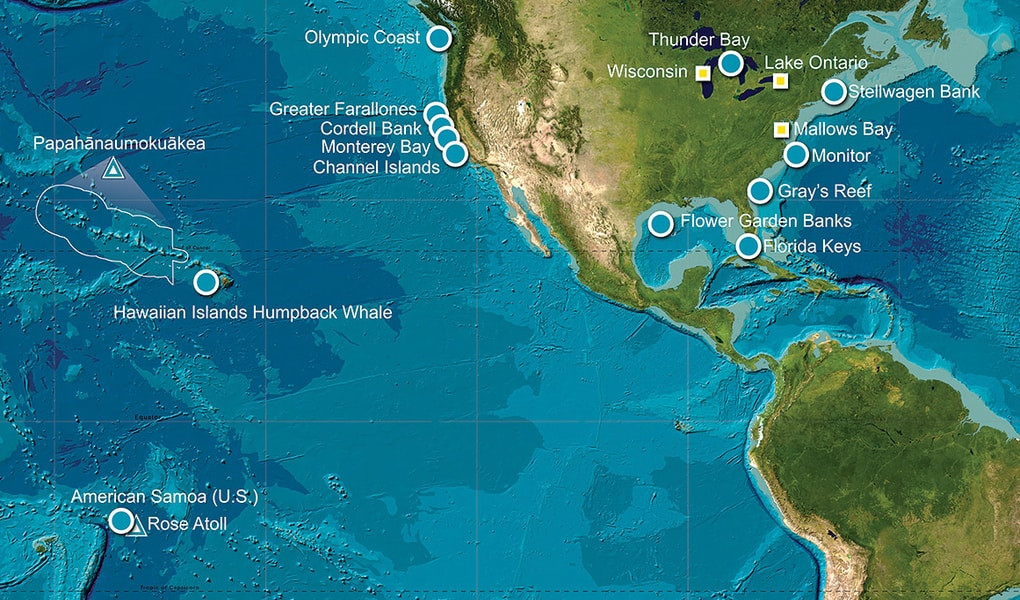
National Marine Sanctuaries
As we embark upon the last month of summer, thought it might be interesting to do a post on US National Marine Sanctuaries which includes both ocean and freshwater underwater parks. Managed by the National Oceanic and Atmospheric Administration (NOAA), the marine sanctuary system was initially established 40+ years ago in 1966 by the US government, but wasn't formalized until 8 years later with the passage of the National Marine Sanctuaries Act in 1972.
The current area protected by the marine sanctuaries is 600,000+ square miles, an area greater than 775 x 775 miles, and is slightly larger than the protected land areas in the US which includes the National Park System. That being said, it's really a drop in the bucket given the ocean is 70%+ of the earth's surface. This area covers 14 national marine sanctuaries, the latest being Mallows Bay - Potomac River National Marine Sanctuary within the last few weeks, and 2 marine national monuments. While this is just the beginning, protection of these areas is critical to humans developing a better understanding of the ocean given how little we really know today as well as the moral imperative of conserving these resources for future generations.
In the US we have been fishing the waters off of New England since the pilgrims landed in 1620. This, in turn, has led to the demise of much of the Atlantic cod fishery in the late 1980s and early 90s (I grew up in the Boston area so had a front row seat) which has created repercussions that are now pressuring the Pacific cod stocks (I have a friend who is a boat captain in Alaska who agrees) as more cod are being pulled from the Pacific to make up for the decline in the Atlantic fishery.
This example of the cod fishery, and there are others such as the severe overfishing of sharks, highlights the absolute necessity of creating these national marine sanctuaries and expanding them to protect the ocean as both a food source and for diversity's sake given that climate change is adversely impacting both agriculture and fisheries and will likely continue to do so. Add in continued population growth around the globe, especially since 1930, and at some point something has to breakdown as the world's resources are finite.
While we have taken some much needed steps towards protecting the ocean over the last few decades, the work here is really just getting started as we prepare for the remaining 80 years of the 21st century.
